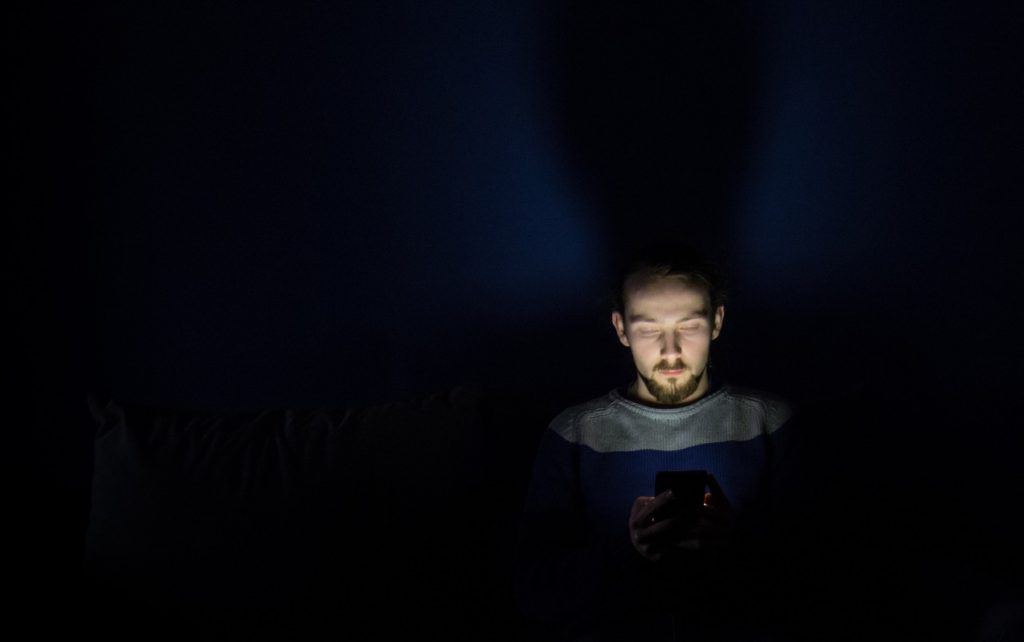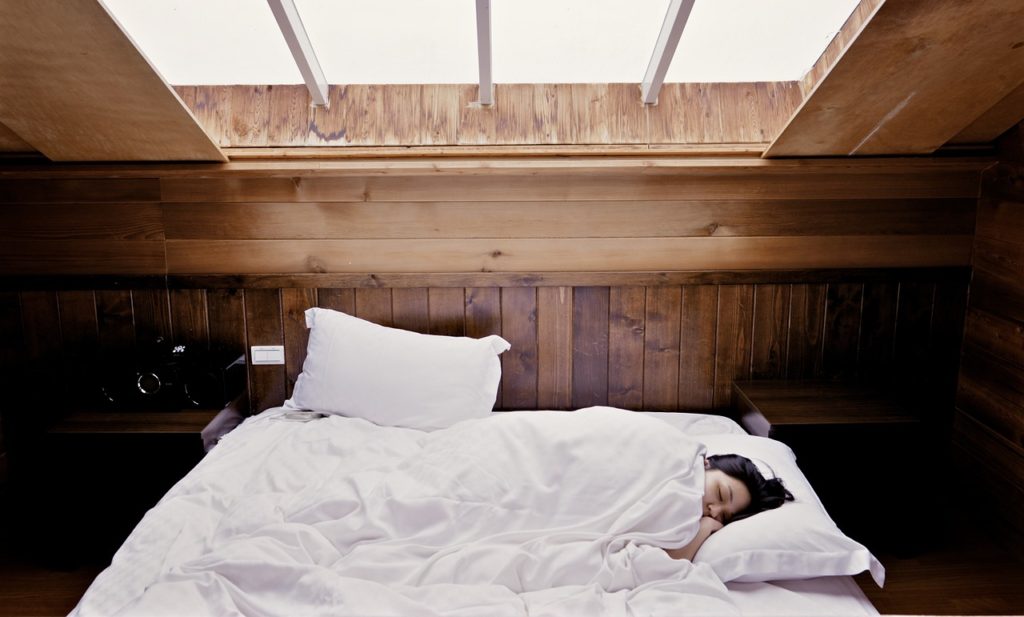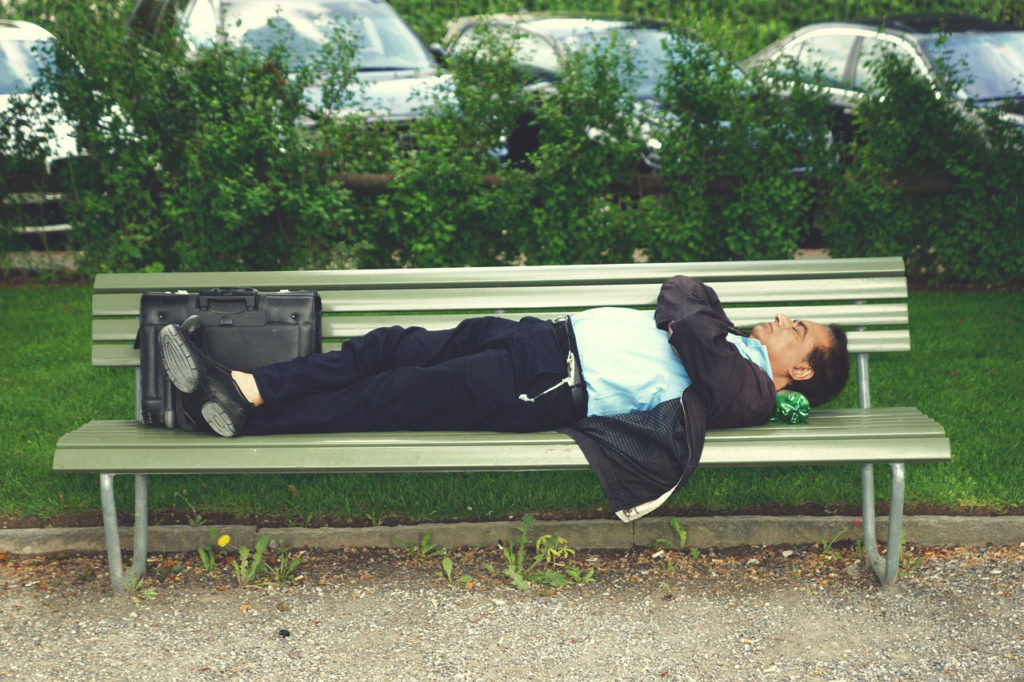By now, you probably have already read somewhere or been told by someone that it’s not good to be using your phone in your bed. Perhaps you’ve even tried cutting back on your in-bed screen time, but haven’t noticed much difference or found it too hard. After all, your phone is your bedside alarm clock… as well as your ebook reader, and your anti-boredom device, and your social network portal, and your emergency communications system… It’s no wonder that people have such a difficult time unplugging from it, even in bed. So exactly how bad is it? And, do you really need to give it up?
“Blue” light is disruptive to sleep
There’s now wide scientific consensus that the type of light emitted from our digital devices (smartphones, tablets, computers, etc.) is particularly disruptive to our body’s regulation of sleep, and it has to do with light wavelengths and your circadian rhythm. Up until the advent of electricity, humans have relied on the sun’s schedule to sleep and rise, and we now know that our bodies are biologically attuned to sunlight to keep our circadian rhythms aligned with the earth’s day and night cycle. With the invention of electricity and artificial lighting, we have effectively been able to extend the daylight hours, causing disruption to the circadian rhythm.
In fact, research in recent years has found the exact mechanism that gets disrupted – the secretion of melatonin, a sleep-related hormone, gets suppressed with light exposure and causes the onset of sleepiness to become delayed. This effect is most pronounced for light with shorter wavelengths, which means light on the blue end of the spectrum. And that, it turns out, is exactly the type of light emitted by our digital devices: smartphones, tablets, laptops, TVs, and other LCD screens. Thus the brighter the screen and the closer to bedtime your use is, the more likely it is to disrupt your sleep that night as well as your circadian rhythm in the longer term.
Smartphones cause neurophysiological arousal
Did you know that apps on your smartphone (such as social media, messaging, games, and other apps) are designed specifically to foster addictive behavior and to cause you to keep coming back? They do this by targeting the “pleasure” (or reward) systems in the brain, which then reinforces addictive behavior – behavior that seeks more and more of the neurological reward. The neurotransmitter involved is called dopamine, and it’s responsible for the transient rush you feel when you see 14 more “likes” on your latest photo, and it’s also responsible for fueling the seeking behavior such as scrolling endlessly and aimlessly on Facebook or constantly checking your phone to see if there are any new notifications. You get a tiny dopamine “hit” whenever your phone buzzes with a new notification or message, and your arousal level increases to aid you in seeking out more of this high.
Now can you see why it might be problematic to have this device sitting next to your head while you are trying to fall asleep? The pull to use your smartphone is almost irresistible if you’re unable to fall asleep, and if you start using it it will obviously make it more difficult to fall asleep. Even if you’re able to resist the urge, having the phone so close can increase your arousal level as you subconsciously anticipate unpredictable timing of the next notification (called intermittent reinforcement in behavioral psychology).
Non-sleep activities in bed reinforce non-sleep
Anytime you are in bed and engaging in an activity that is not sleeping or being sleepy, you are reinforcing the association between bed and wakefulness and weakening the association between bed and sleep. If you’ve read my insomnia treatment guide, you’ll recognize this as a prime example of behavioral conditioning. This is the reason that sleep experts tell you not to watch TV in bed, read in bed, do work in bed, etc. Now, if you don’t really have a problem falling asleep or staying asleep, then I’ll grant that you probably don’t feel a strong incentive to cut out the smartphone habit. We all engage in some level of unhealthy or non-optimal habits. However, if you do struggle with poor sleep, it is very important that you interrupt your phone-in-bed habit, as well as any other activity in bed that isn’t sleeping or being sleepy (intimacy is a generally agreed-upon exception).
Practical tips on what you should do
If you are a smartphone-in-bed user and are ready to make some behavior changes, here are some tips to get you started. Some might find these easy to do, but don’t worry if you feel like it is the hardest thing in the world to create some healthy distance between you and your phone. This is something that my insomnia clients and non-insomnia friends alike struggle with, particularly if you’ve let it become an ingrained habit – remember, it can be addictive! And if you have poor sleep, it is especially important that you address this behavior. Resist the urge to make excuses about using the phone to cope with poor sleep, since you now know (and probably suspected before) that the phone is undeniably further perpetuating disrupted sleep.
- Cut the screen time about an hour before bedtime. Some experts recommend two or more hours – choose what works for you and your family. TV, video games, smartphone games, social media, working on the computer: those are all things you should avoid doing right before bed. If you can manage physically leaving your phone out of your bedroom, all the better.
- Turn down the brightness, and adjust color temperature if possible. When using your phone (and other devices) after dark, lower the brightness setting. I also highly recommend using the built-in setting or an app to adjust the color temperature to minimize blue light exposure. On iOS it’s a setting called Night Shift, and on some Android phones this setting is built in (blue light filter) but if not you can download an app called f.lux. This is an app that’s also available for PC and Mac. I have all my devices set to activate this mode between sunset and sunrise.1
- Use Do Not Disturb mode at night to eliminate unnecessary notifications. This is also a very important feature to take advantage of if you want to coexist with your technology in a healthy manner. This goes especially if you keep your phone near your bed as an alarm clock. Schedule a block of time (preferably beginning before your bedtime) where you will not be buzzed by messages and other notifications. This reduces the arousal caused by having your phone near you. Alternatively, experiment with having the phone far away for a week or two to see if it helps you sleep better.
- Maximize light exposure in the mornings. In addition to generally minimizing the light exposure in the evenings, not only from cell phones and screens but artificial lighting in general, you also want to expose yourself to maximum morning light as possible. Together, these help to properly reinforce your circadian rhythm. Throw open the blinds when you wake up, go for a morning run/walk, or schedule outdoor activities earlier.
For further reading:
- http://www.health.harvard.edu/staying-healthy/blue-light-has-a-dark-side >>
- https://www.scientificamerican.com/article/q-a-why-is-blue-light-before-bedtime-bad-for-sleep/ >>
- https://www.theatlantic.com/health/archive/2012/07/exploiting-the-neuroscience-of-internet-addiction/259820/ >>
- https://www.psychologytoday.com/blog/brain-wise/201209/why-were-all-addicted-texts-twitter-and-google >>


